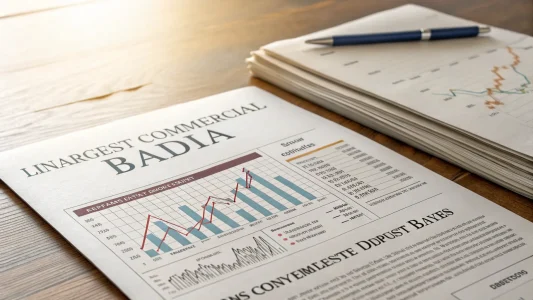The year 2024 is marked by individuals seeking to reduce risk in their financial holdings and enhance their net worth consistently in foreseeable ways. In the quest to achieve economic stability, many investors have turned to certificates of deposit (CDs) as an attractive option.
Table of Contents
ToggleWhy Certificates of Deposit are Gaining Popularity
Investing in CDs has been experiencing a rising trend in interest rates, varying from 4.75% to 5.5% APY. As a result, certificates of deposit have become an increasingly attractive option for investors seeking safe and reliable means of growing their wealth. With competitive interest rates and predictable returns on investment, CDs are now viewed as a stable choice amidst an uncertain economic landscape.
Seeking Expert Advice on CDs
Investors need to obtain advice from financial planners, such as certified financial planner Michael Manske, better to understand various types of CDs and their advantages. Manske provides counsel on understanding liquidity necessities before selecting a CD.
Assessing Your Financial Needs and Time Horizon
Michael Manske emphasizes the importance of evaluating one’s financial needs and time horizon before committing to a particular type of CD. He also stresses the need for investors to carefully analyze different CDs’ interest rates, terms, and potential penalties to make an informed decision that aligns with their financial goals.
Understanding Different Types of CDs
Manske further explained that there are four primary types of CDs, each with its own distinct advantages. The first type is fixed-rate CDs, which provide a pre-set interest rate for a specified duration, making them most suitable for those who value investment stability.
The second type, variable-rate CDs, allows interest rates to change based on market conditions during the investment period. This offers the potential for higher returns if rates increase but carries the risk of lower returns if rates decline. The third type of CD, step-up CDs, features interest rates scheduled to rise at specific intervals over the investment term, providing a potential advantage for the investor in a rising rate environment.
Evaluating Your Liquidity Requirements
Before investing in a CD, Manske recommends assessing one’s liquidity requirements, such as contemplating short-term needs like purchasing a costly item within the next three months. It is also essential to consider any potential emergency expenses that may arise, requiring immediate access to funds. By thoroughly assessing short-term and unforeseeable expenses, individuals can make informed decisions when considering CDs as an investment option.
Selecting the Appropriate Maturity Date
In this instance, the investor might choose a CD that matures within that period, allowing them access to their funds when needed. However, if liquidity is not a pressing concern, a CD with an extended maturity date might be more suitable. This allows investors to take advantage of higher interest rates typically associated with longer-term CDs, resulting in greater returns on their investment. Investors must weigh the benefits and limitations of both short and long-term CDs while considering their financial goals and desired level of liquidity.
Making Well-Informed Choices for CD Investments
By recognizing their financial objectives and needs, investors can make well-informed decisions when determining the most suitable CDs for their portfolios. Investors should consider factors such as interest rates, maturity dates, and potential penalties for early withdrawal to select the optimal CD. By carefully assessing these elements and comparing them to one’s personal financial goals, one can confidently choose a CD that will complement one’s investment strategy and contribute to long-term economic success.
In conclusion, as CD interest rates continue to rise and investors look for stable investment options, certificates of deposit have become increasingly popular. With expert advice and proper assessment of financial goals, investors can make informed decisions on the right type of CD for their portfolio, enabling them to grow their wealth consistently.
Frequently Asked Questions
Why are certificates of deposit (CDs) gaining popularity in 2024?
CDs are gaining popularity because of rising interest rates, ranging from 4.75% to 5.5% APY. They offer a safe and reliable means for investors to grow their wealth while providing competitive interest rates and predictable returns amidst an uncertain economic landscape.
What advice should I seek before investing in CDs?
It is recommended that investors obtain advice from financial planners, such as certified financial planners, before making a decision. These planners can provide counsel on understanding liquidity necessities and the advantages of various types of CDs.
What factors should I consider when assessing my financial needs and time horizon?
Before committing to a CD, investors should evaluate their financial needs, time horizons, interest rates, terms, and potential penalties associated with different CDs to ensure the chosen investment aligns with their financial goals.
What are the different types of CDs?
There are four primary types of CDs: fixed-rate, variable-rate, step-up, and callable. Each type has distinct advantages and can suit different investor needs and goals.
How should I evaluate my liquidity requirements before investing in CDs?
Assess both short-term and unforeseeable expenses, such as purchasing a costly item or potential emergency expenses, to determine suitable liquidity requirements when considering CDs as an investment option.
How do I select the appropriate maturity date for my CD?
Consider your liquidity needs and financial goals when choosing a maturity date. Short-term CDs may be suitable for those who need access to funds sooner. In contrast, longer-term CDs typically offer higher interest rates and greater returns for those without pressing liquidity concerns.
How can I make well-informed choices for CD investments?
Recognizing personal financial objectives and needs, investors should consider factors such as interest rates, maturity dates, and potential penalties for early withdrawal when determining the most suitable CDs for their portfolios. Comparing these elements to one’s financial goals can help you confidently choose the correct CD to complement an investment strategy.
Featured Image Credit: Photo by Maria Helena Mazuroski; Pexels
















